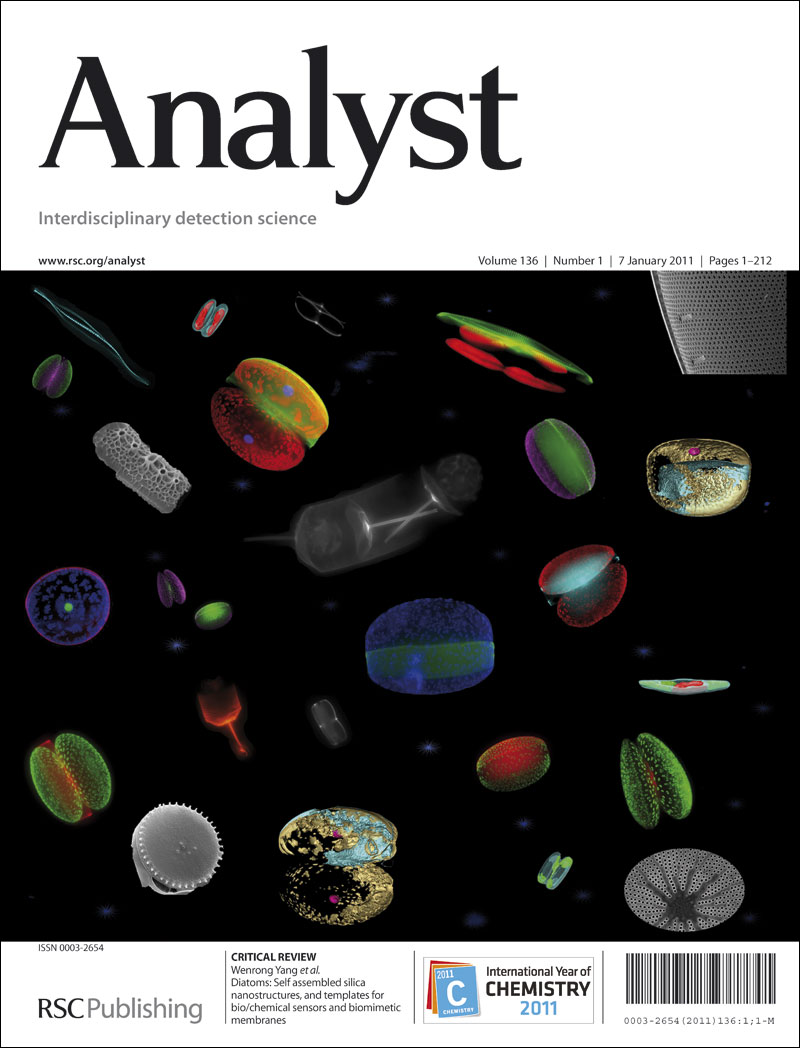HIST-DIP: Histogram Thresholding and Deep Image Priors assisted Smartphone-Based Fluorescence Microscopy Imaging
IF 3.3
3区 化学
Q2 CHEMISTRY, ANALYTICAL
引用次数: 0
Abstract
Portable fluorescence microscopes coupled with smartphones offer accessible and cost-effective point- of-care diagnostic solutions, but often produce noisy and blurry images with poor contrast. Here, we introduce HIST-DIP (HIStogram Thresholding and Deep Image Prior), an unsupervised framework for fluorescence microscopy image restoration. Histogram thresholding isolates fluorescence signals by removing background noise, while DIP refines structural details and enhances resolution without large labeled datasets. Validation results show substantial quality gains including the average Peak Signal-to-Noise Ratio (PSNR) improved from 15.59dB to 27.10dB, and the Structural Similarity Index Measure (SSIM) rose from 0.035 to 0.82. Contrast-to-noise ratio (CNR) and signal difference- to-noise ratio (SDNR) also increased significantly, indicating sharper bead outlines and reduced background interference. Unlike conventional deep learning methods, HIST-DIP needs no external training data, making it well-suited for real-time, low-cost, and point-of-care diagnostic imaging. These findings highlight the potential of HIST-DIP in enhancing the quality of smartphone-based microscopy images, while also motivating future research towards optimizing the methods for real- time on-device computations.histdip:直方图阈值和深度图像先验辅助基于智能手机的荧光显微镜成像
与智能手机相结合的便携式荧光显微镜提供了易于使用且具有成本效益的护理点诊断解决方案,但通常会产生噪音和模糊的图像,对比度较差。在这里,我们介绍了HIST-DIP(直方图阈值和深度图像先验),这是一种用于荧光显微镜图像恢复的无监督框架。直方图阈值法通过去除背景噪声来分离荧光信号,而DIP可细化结构细节并提高分辨率,无需大型标记数据集。验证结果表明,平均峰值信噪比(PSNR)从15.59dB提高到27.10dB,结构相似指数度量(SSIM)从0.035提高到0.82,质量得到了显著提高。对比噪声比(CNR)和信号差噪比(SDNR)也显著增加,表明珠子轮廓更清晰,背景干扰减少。与传统的深度学习方法不同,HIST-DIP不需要外部训练数据,因此非常适合实时、低成本和即时诊断成像。这些发现突出了HIST-DIP在提高基于智能手机的显微镜图像质量方面的潜力,同时也激励了未来对优化实时设备上计算方法的研究。
本文章由计算机程序翻译,如有差异,请以英文原文为准。
求助全文
约1分钟内获得全文
求助全文
来源期刊

Analyst
化学-分析化学
CiteScore
7.80
自引率
4.80%
发文量
636
审稿时长
1.9 months
期刊介绍:
"Analyst" journal is the home of premier fundamental discoveries, inventions and applications in the analytical and bioanalytical sciences.
 求助内容:
求助内容: 应助结果提醒方式:
应助结果提醒方式:


